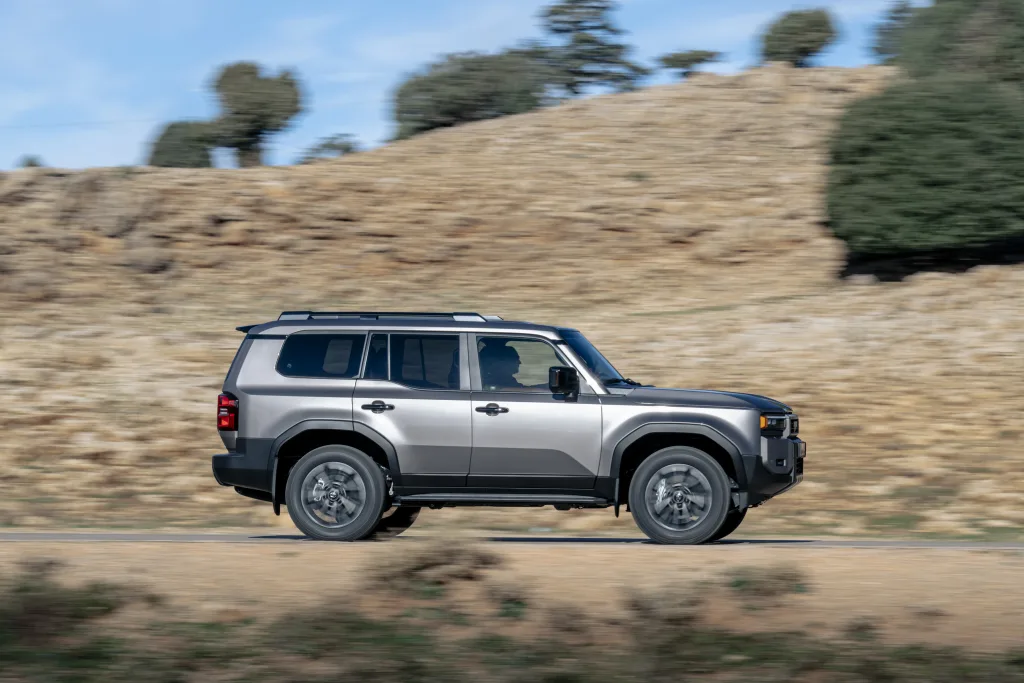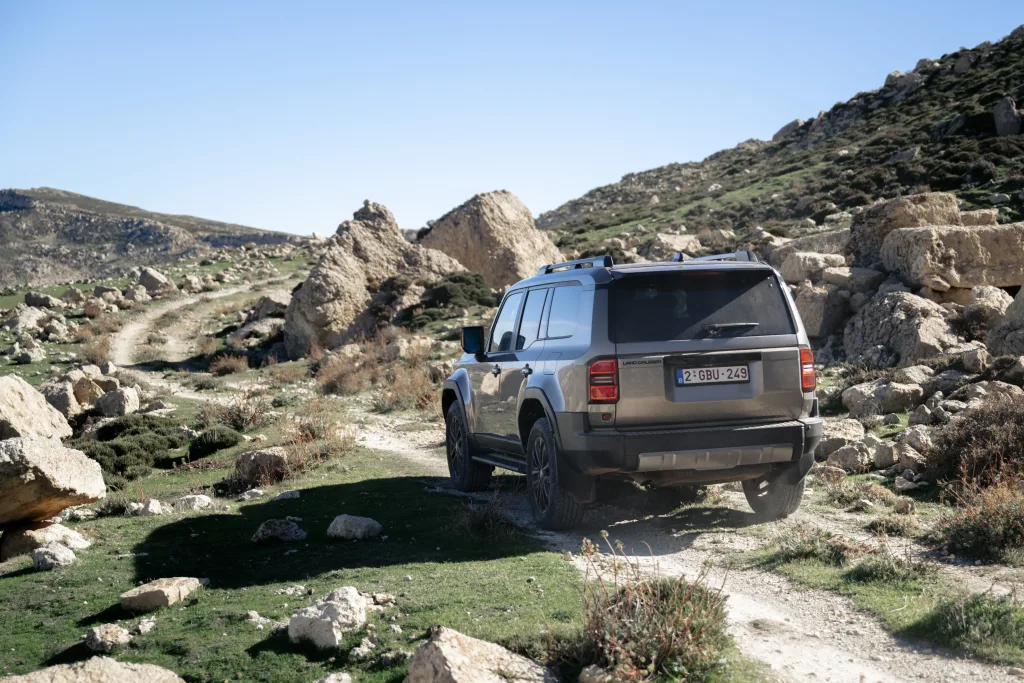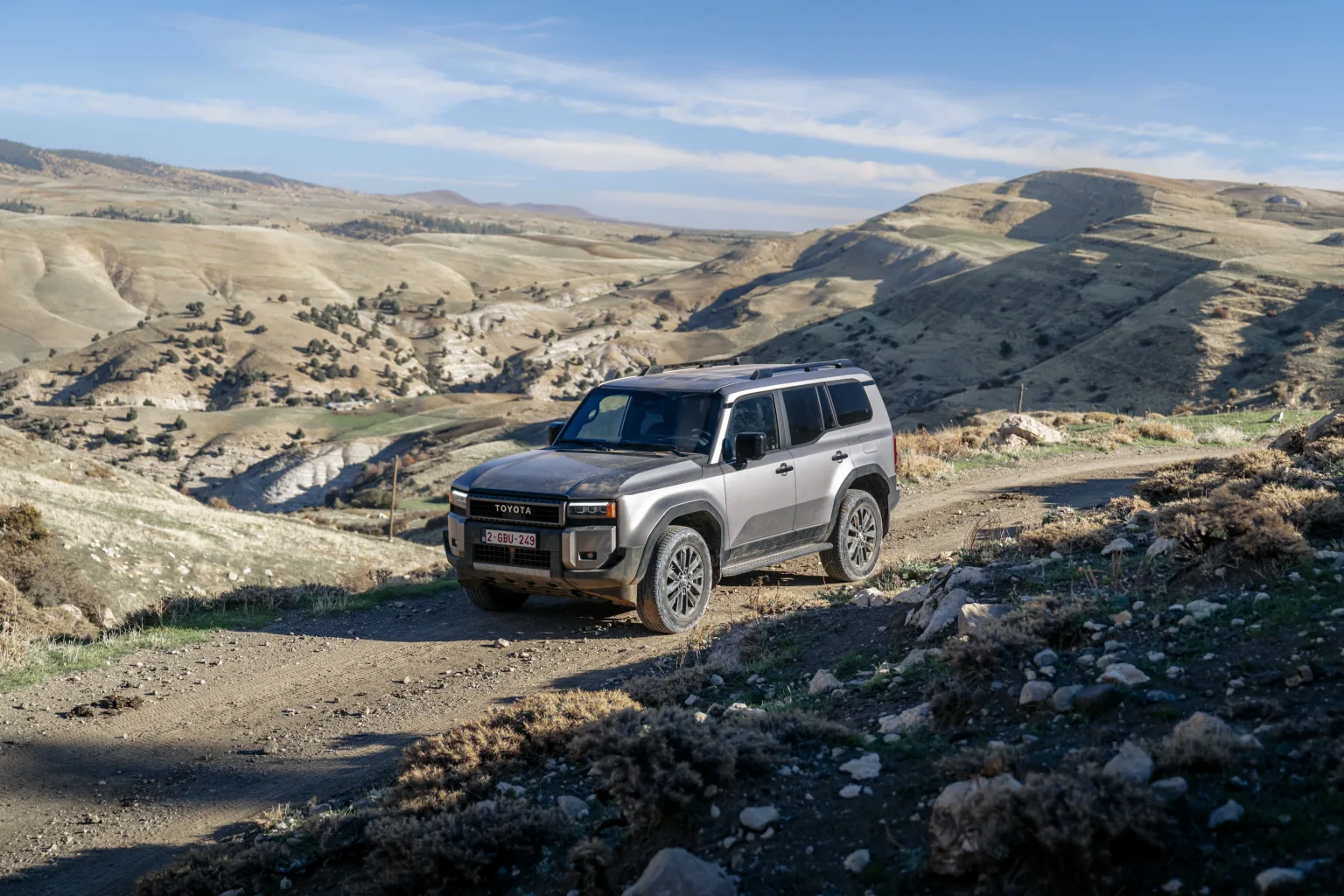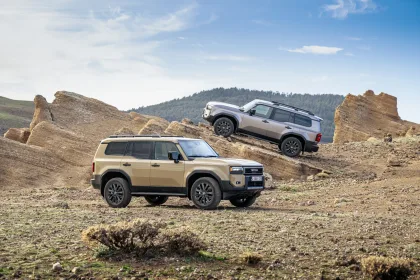- First electrified powertrain to be featured in the Toyota Land Cruiser in Europe
- Hybrid 48V system provides smoother, more comfortable performance in both on and off-road driving
- No compromise in Land Cruiser’s formidable off-road capabilities – including 700 mm wading depth
- European sales starting now; customer deliveries from the end of 2025
The Toyota Land Cruiser is powering into a new era with the adoption of its first electrified drivetrain. The new Land Cruiser Hybrid 48V introduces a mild hybrid system that delivers smoother, more comfortable performance both on and off-road, with no compromise on the SUV’s ability to tackle the most challenging terrains.
Launched in late 2024, the all-new Land Cruiser combines the model’s long-established strengths of quality, durability and reliability with new technologies and distinctive design that blends contemporary lines with heritage details. Built on a new Toyota New Global Architecture body-on-frame platform, it has even greater strength to tackle challenging conditions while delivering composed, reassuring on-road behaviour.
The Hybrid 48V system combines Land Cruiser’s existing 2.8-litre engine and eight-speed Direct Shift automatic transmission with an electric motor-generator, lithium-ion hybrid battery and a DC-DC power converter. The components are designed and positioned to withstand harsh environments, so the vehicle’s capabilities are undiminished – including its 700 mm water wading depth.
The benefits include a smoother, quieter and more responsive engine stop-start system and smooth, linear and powerful acceleration from start-off.

Toyota’s Hybrid 48V system
Toyota’s new mild hybrid system has been designed for simple integration. Being more compact than the Toyota full hybrid system, it can be more easily fitted to existing powertrains without requiring significant redesigns or re-engineering. Thanks to this, the Hybrid 48V powertrain is also recently introduced to the new Toyota Hilux.
The Hybrid 48V system uses the Land Cruiser’s established 2.8-litre turbodiesel engine and introduces three principal new components: an electric motor-generator, which replaces the conventional alternator; a 48V lithium-ion battery; and a DC-DC converter which controls the energy flow battery and motor.
The system in no way compromises the Land Cruiser’s ability to operate in extreme conditions and rough terrain. For example, the motor-generator has been positioned high on the engine block so that the vehicle can still wade at low speed through water up to 700 mm deep.

Electric motor-generator
The electric motor-generator – a permanent magnet synchronous type unit – is driven by the engine and in turn charges the lithium-ion battery. It brings multiple benefits to the driving experience, both on-road and off.
It provides a regeneration function, recovering energy every time the driver comes off the throttle using engine braking. This is then used to provide the engine’s stop-start function and support acceleration, minimising waste. It improves efficiency, makes driving easier and produces natural-feeling deceleration. In on-road driving, acceleration when pulling away and deceleration are smooth and linear, contributing to a more composed and comfortable ride.
On rougher, off-road surfaces, the motor-generator adds to the Land Cruiser’s ability to tackle obstacles.
The operating status is indicated in the driver’s multi-information display with a read-out showing CHG (energy regeneration), ECO or PWR (providing assist in both cases).
Stop-start performance
The Hybrid 48V system enables quicker and quieter engine stop-start performance with less shock, making for an easier and more comfortable drive in traffic.
As the motor-generator is always connected, there is less delay in immediate engine restarts after stopping. It also allows for restarts at high engine speeds.
The system will operate an auto-stop when driving in heavy traffic, or when the driver accidentally restarts the engine by reducing their pressure on the brake pedal.
The driver can set their preference for stop and start performance, selecting NORMAL or LONG in the vehicle’s multi-information display. When choosing LONG, the engine’s idling stop time is increased when the air conditioning is operating.
When the vehicle is on an uphill gradient, there may be a slight delay between engine restart and the generation of drive torque. As an auxiliary function, the stop and start system will maintain the brake pressure until sufficient drive torque is generated, to achieve a smooth start-off. Also, when the vehicle is on a level surface, the system offsets any excess drive torque produced on restart.
Injection volume control has been optimised to support the system’s responsiveness, balanced against the level of shock experienced during acceleration.
Lithium-ion hybrid battery
The 48V lithium-ion hybrid battery features 13 cells and a 4.3 Ah capacity. Weighing just 7.6 kg, it has been designed with compact internal components to allow for integration beneath a revised deck board layout, helping to limit the impact on overall load space.
When fully charged, it can supply up to an additional 12 kW of power and 65 Nm of torque to the powertrain at start-off.
Both the hybrid battery and the low-profile DC-DC converter are protected against water ingress, and as much cooling air as possible is drawn into the battery from the front of the vehicle, with a lower temperature than the cabin air. A filter helps prevent the build-up of dust in the battery’s cooling paths and fan helps prevent battery performance deteriorating in high temperatures.
Two-arm belt-tensioner
The motor-generator operates with two-arm belt tensioner which has been designed specifically for use in diesel engine vehicles and to meet the demands of rough-road driving. As well as providing the required the level of belt tension, it also provides restart assistance and improved acceleration response. Noise and vibration performance is on par with gasoline engine vehicles.
The belt’s material composition is key to its performance. A high-strength cotton fabric layer on the ribbed side of the belt reduces noise, absorbs water and maintains its friction coefficient when wet. This helps achieve consistent performance in challenging conditions, for example when driving through water.
A high-strength aramid cord is used at the core of the belt, enhancing reliability when tension increases are experienced, for example when the motor-generator starts the engine or the increases the level of power generation.
Stoppers in the tensioner arms reduce abnormal noise and vibration caused by the arms striking the housing when switching to motor-generator mode. Bushes in the damping mechanism are designed to help prevent foreign bodies entering the sliding parts, such as dust and grit in rough road driving.
Market introduction
All European Land Cruiser models will adopt the Hybrid 48V system. National markets will be opening order books shortly with the first models expected to be with customers from the end of this year.










